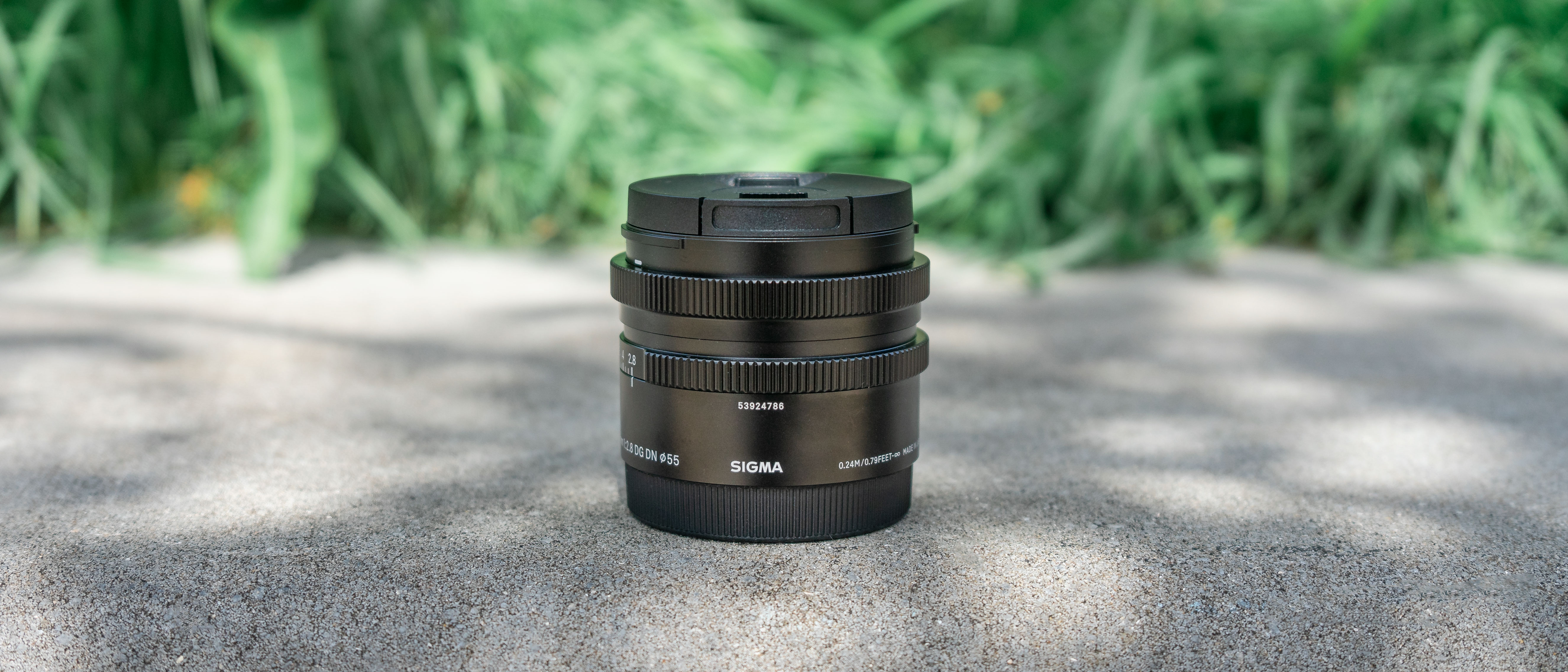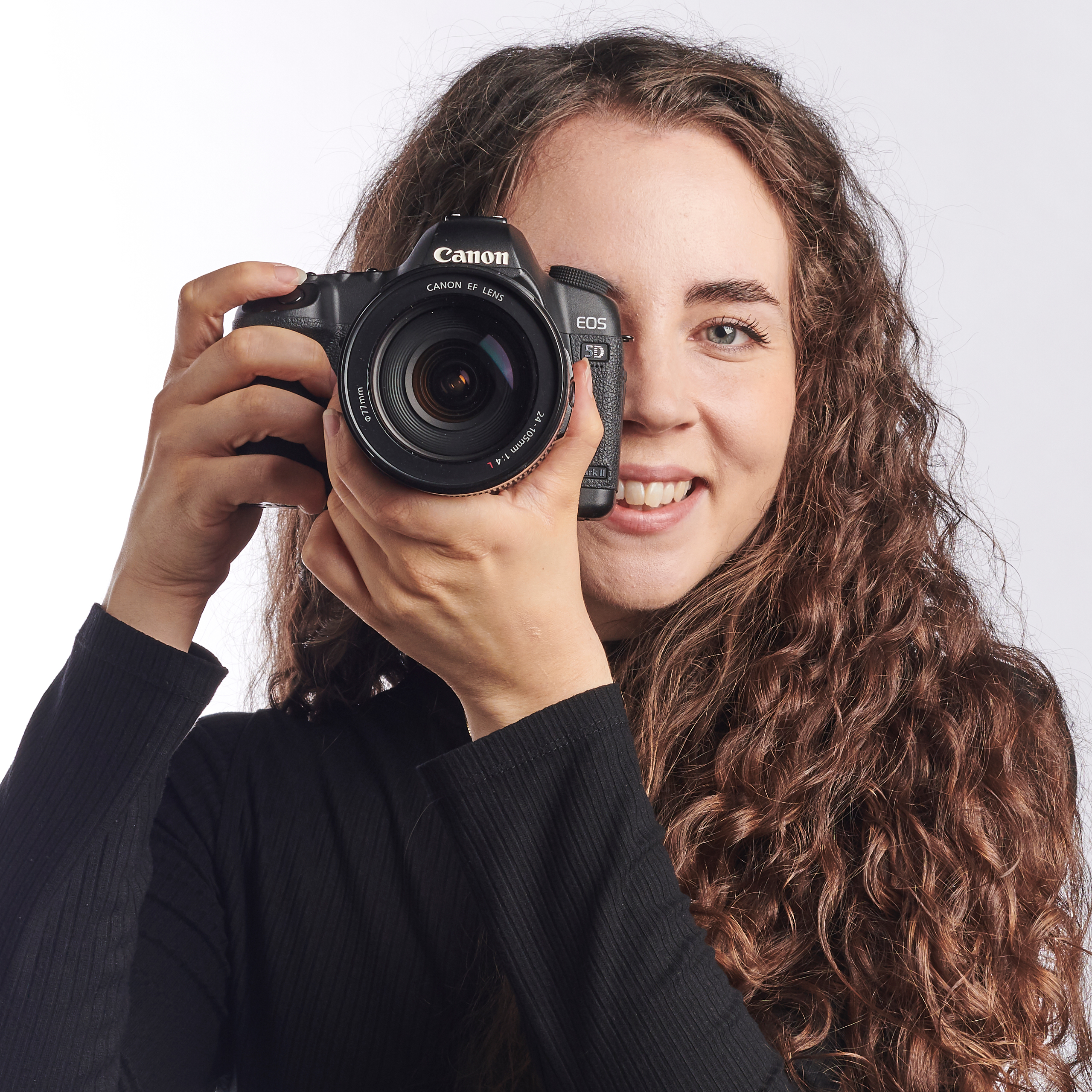Digital Camera World Verdict
Boasting great image quality and a robust build, the Sigma 45mm f/2.8 proves that good things truly do come in small packages. While we may be used to seeing fantastically wide maximum apertures from Sigma, this understated 45mm f/2.8 more than holds its own against its more glamorous cousins. While we may have small quibbles with the lens' vignetting and slight distortion, we would snap this beautiful piece of glass up in a heartbeat.
Pros
- +
Small, light and compact
- +
Sturdy, aluminum build
- +
Great image quality
Cons
- -
Vignetting
- -
Slight distortion
- -
Aperture ring isn't stepless
Why you can trust Digital Camera World
Small, light and relatively fast, the Sigma 45mm f/2.8 is an all-round solid lens that could easily be overshadowed by its more overtly impressive counterparts - but this would be a mistake.
Sitting within Sigma's Contemporary lens lineup, the 45mm f/2.8 is available for both the Sony E-mount and the L-mount (for Panasonic, Sigma and Leica cameras). This means the lens can be used on any Sony, Panasonic, Sigma or Leica full-frame mirrorless camera. As of yet, there have been no announcements regarding whether the Sigma 45mm f/2.8 will also be made available in R or Z mounts.
• Read more: Best 50mm lens
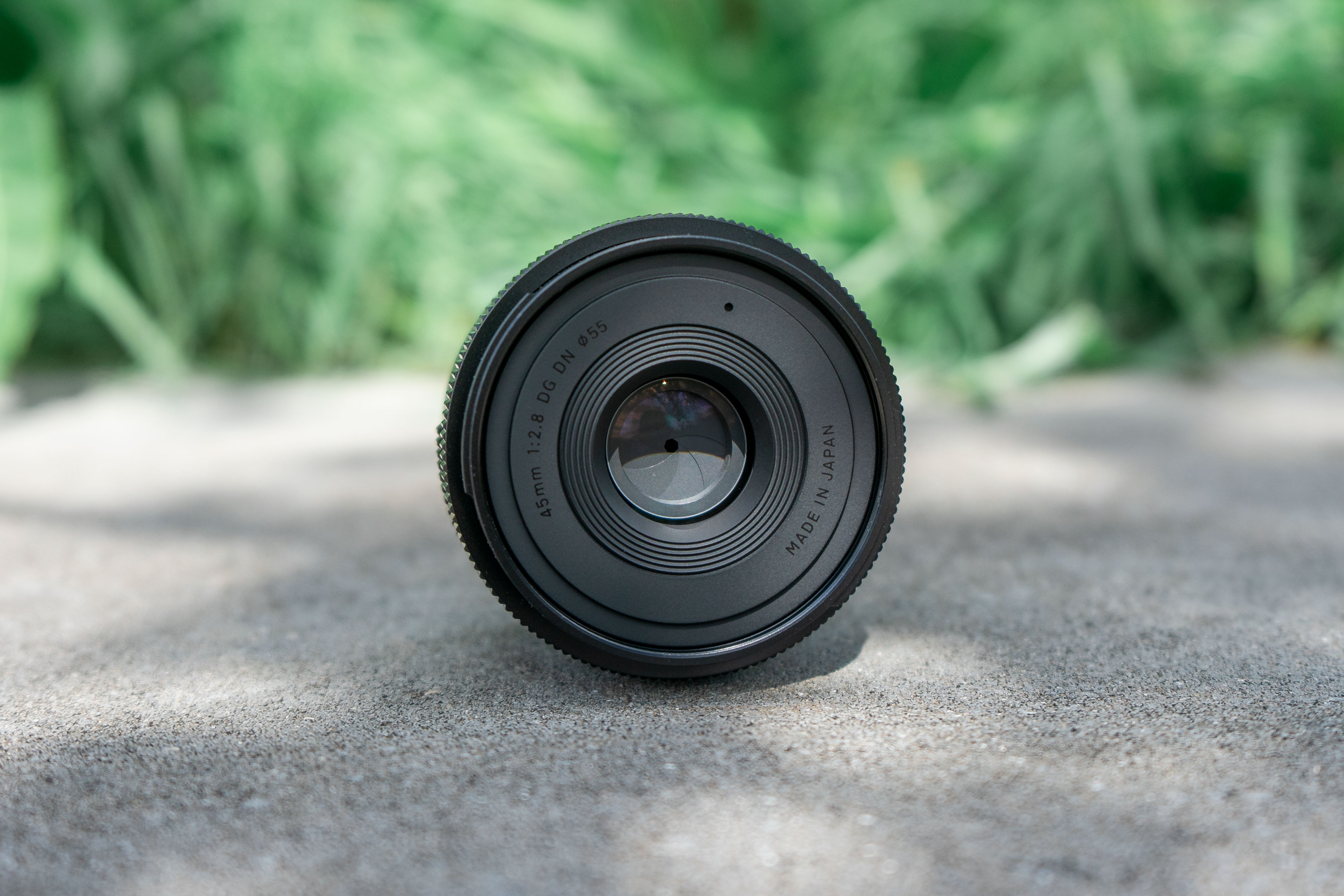
Available for just £549, this lens is priced very similarly to the Sigma Art 50mm f/1.4 (£548) and it seems impossible not to compare the two. Rightly or wrongly, Sigma's Art lens lineup is so iconic that it could be easy to feel disappointed with a Sigma offering that fails to go lower than f/2.8. However, to be tempted into futile comparisons such as these is to miss the point of what this lens excels at.
Weighing in at just over 200g, this incredibly light and compact lens creates a perfectly small profile when paired with a mirrorless camera (we used it with a Sony A7). No matter whether you want to surreptitiously capture candid street photos, or you'd like to shoot portraits without breaking your back with heavy kit, the 45mm f/2.8 is a great option.
Specifications
Mount: Sony E-mount and L-mount
Lens construction: 8 elements in 7 groups
Angle of view (35mm): 51.3°
Number of diaphragm blades: 7 (Rounded diaphragm)
Minimum aperture: f/22
Minimum focusing distance: 24cm/ 9.4in.
Maximum magnification ratio: 1:4
Filter size: 55mm
Dimensions: 64.0mmx46.2mm/ 2.4in. x 1.8in.
Weight: 215g/ 7.5oz.
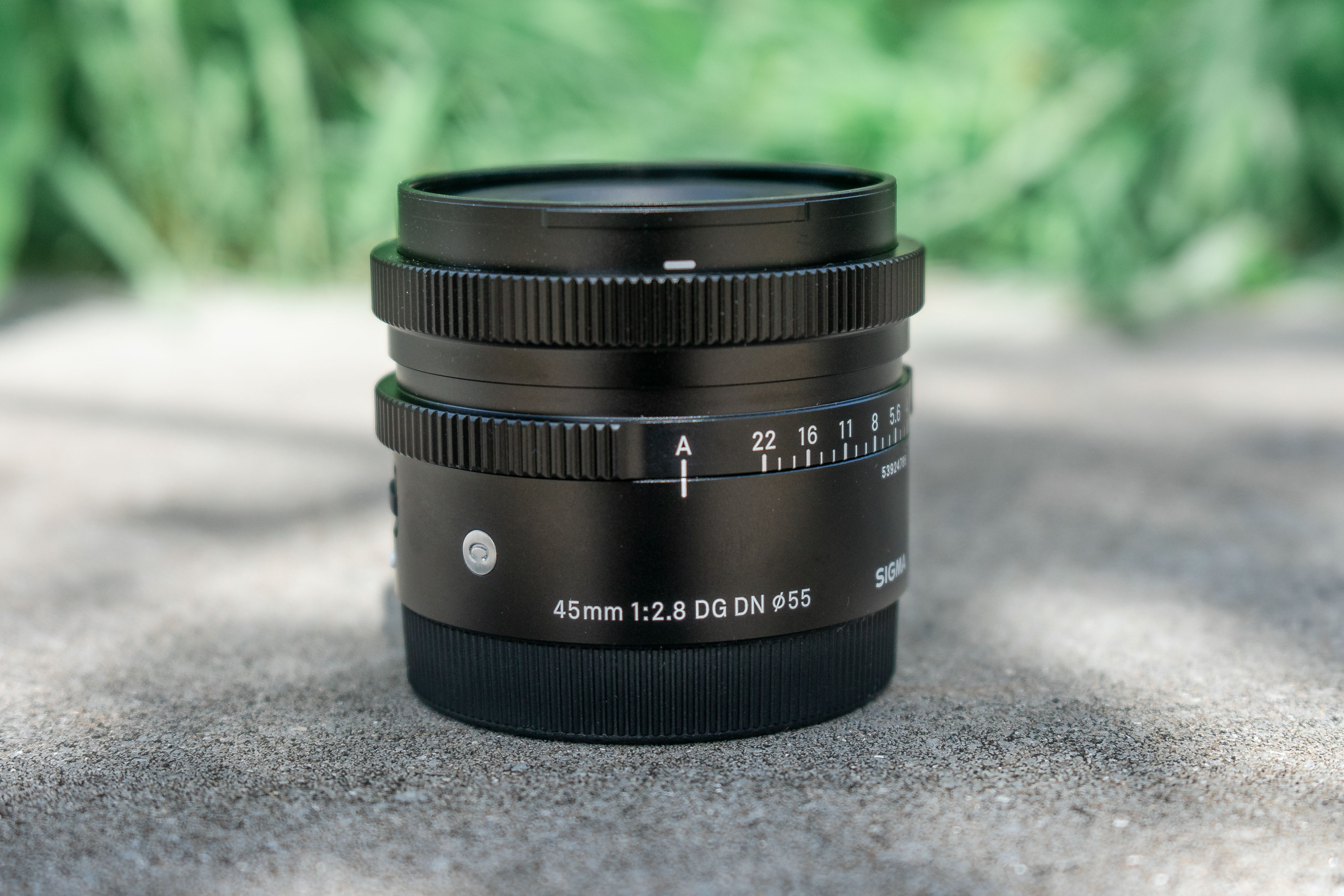
Build and handling
We wish there was a more eloquent way to say this, but this lens is quite simply light. Weighing in at just 215g, we're not certain you'd even notice if you dropped it on your toe (although, despite the sturdy aluminum build, we don't recommend trying to find out).
As we mentioned earlier, with the 45mm f/2.8 and 50mm f/1.4 so similarly priced, it's tempting to compare the two. However, while the 45mm clearly 'loses out' on maximum aperture, it truly trounces the 50mm f/1.4 on weight. At 816g, the 50mm is just over 600g heavier than the 45mm!
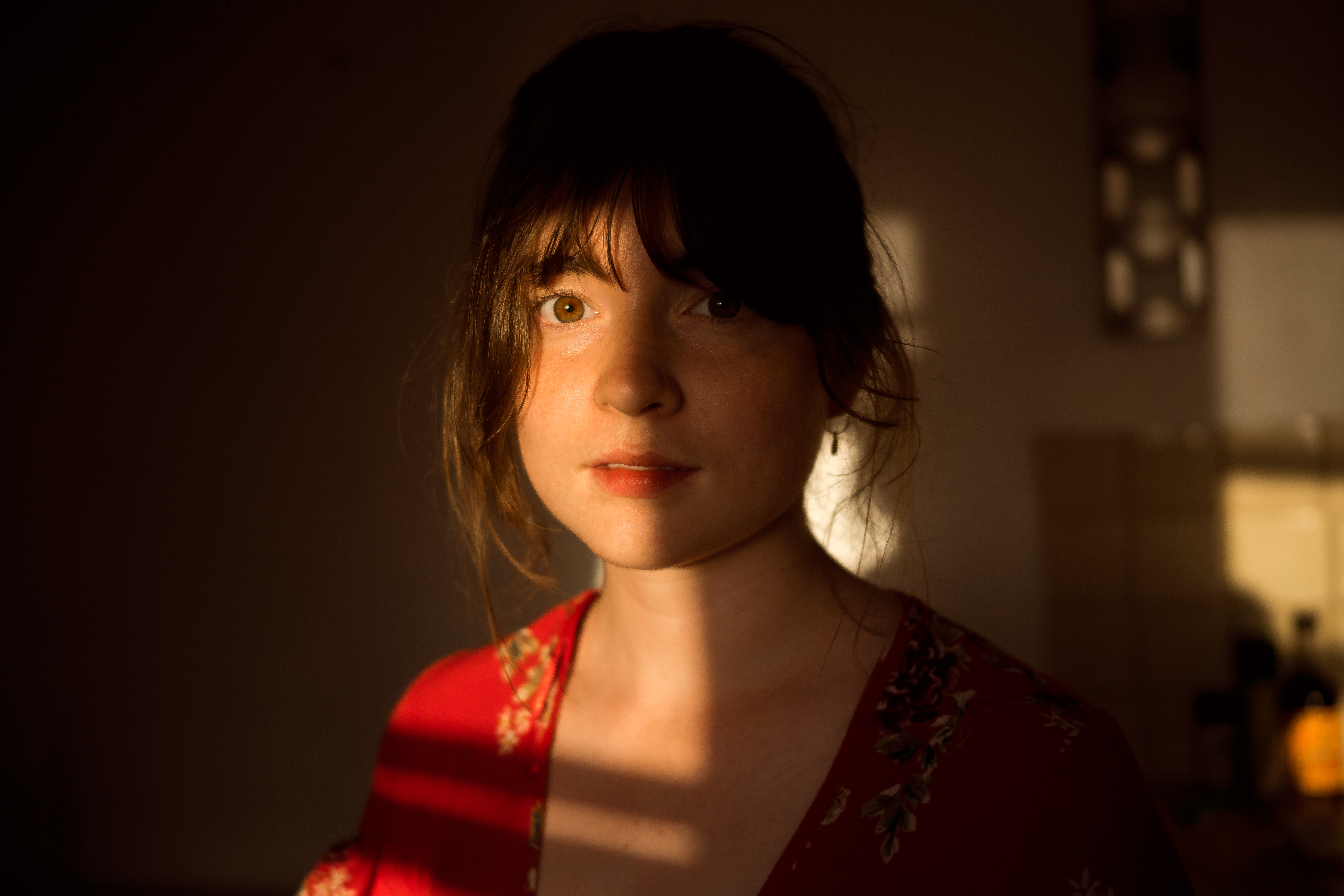
Light camera kit can often unfortunately go hand-in-hand with poor build quality or cheap materials. However, that couldn't be further from the case here. Not only is the lens made from aluminum, but the lens hood is as well. That's a nice touch from Sigma for something that's usually made from plastic.
In an industry constantly pushing for technological innovation, impressive advancements in the tech can often come at the price of making kit heavy and cumbersome. In order to keep a lens this small and light, Sigma had to make some concessions. The most conspicuous absence was a more impressive maximum aperture, but there is also no stabilization included in the lens (although most mirrorless cameras that are compatible with this lens will offer in-body stabilization, so it's not the end of the world).
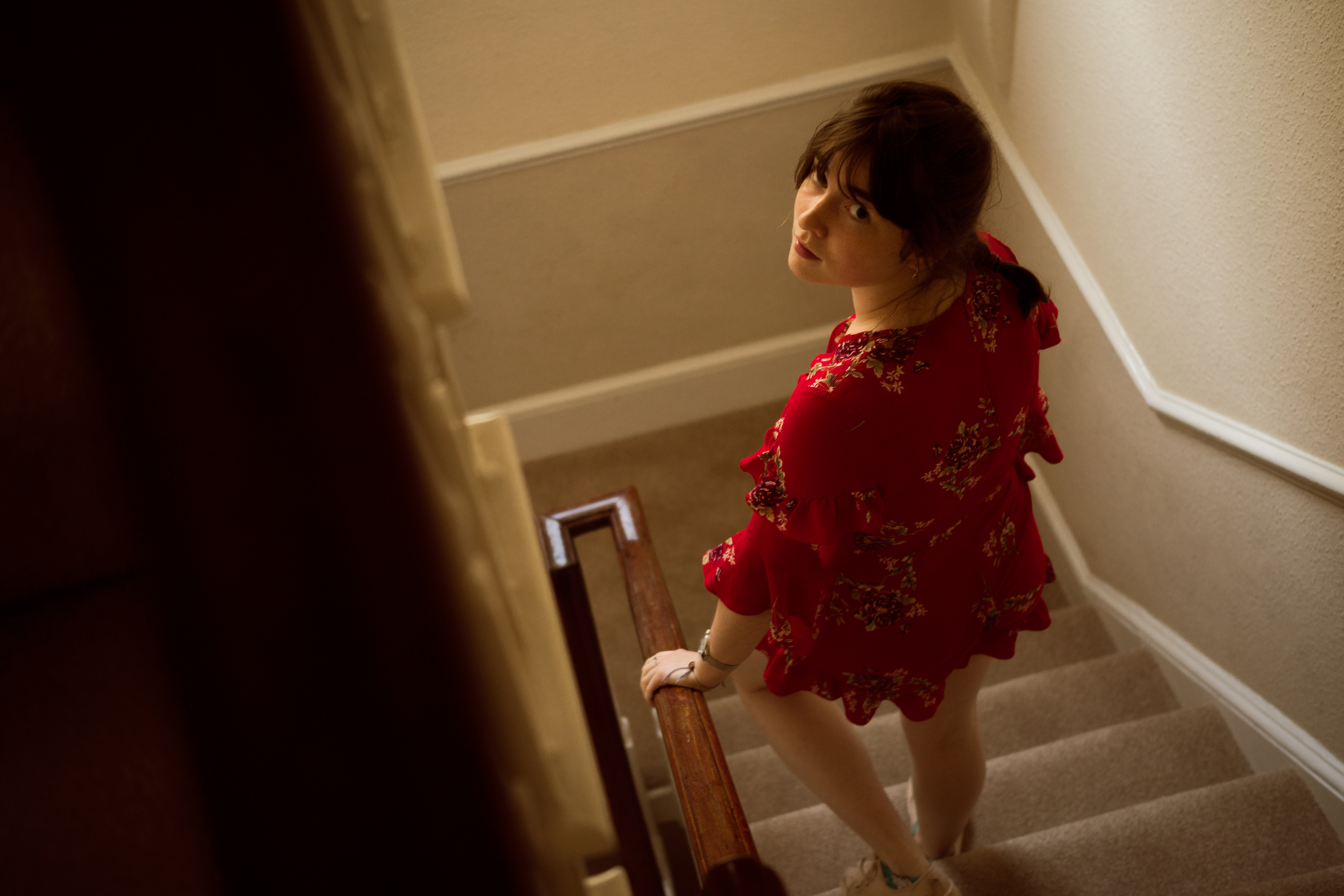
The 45mm f/2.8 also features a physical aperture ring, which we always appreciate. It can be set from f/2.8 to f/22 in third-stop increments. However, if you're not interested in using an aperture ring, then you can use the 'A' setting to switch the control back to the camera body.
While the aperture ring is well-built and easy to use, it's not stepless, so there's no option to adjust the ring smoothly without the clicks. While this isn't an issue for photographers, it will likely make videographers think twice about investing in this lens. This seems like a bit of a misstep from Sigma, as we would imagine that there would be plenty of videographers willing to invest in an affordable, good quality and compact piece of glass such as this.
On the side of the lens there's a switch to adjust your focus mode from automatic to manual. Like everything else on the lens, this feels nicely built and of good quality.
Performance
With a slightly unusual focal length of 45mm, this lens performs (somewhat unsurprisingly) pretty much like a 50mm. As big fans of the 50mm focal length, we couldn't really tell any discernible difference while shooting. If there was any, it could be found when capturing wider scenes rather than close-up portraits.
These wider shots were also where we noticed some light pincushion distortion in our photos - we've made no attempt to correct this for our sample images. We wouldn't say that this level of distortion was particularly problematic, and when capturing closer portraits the difference was negligible. As with most forms of distortion, unless it's really heavy, it's usually only blindingly obvious when you have straight lines or clear patterns that are being disrupted.
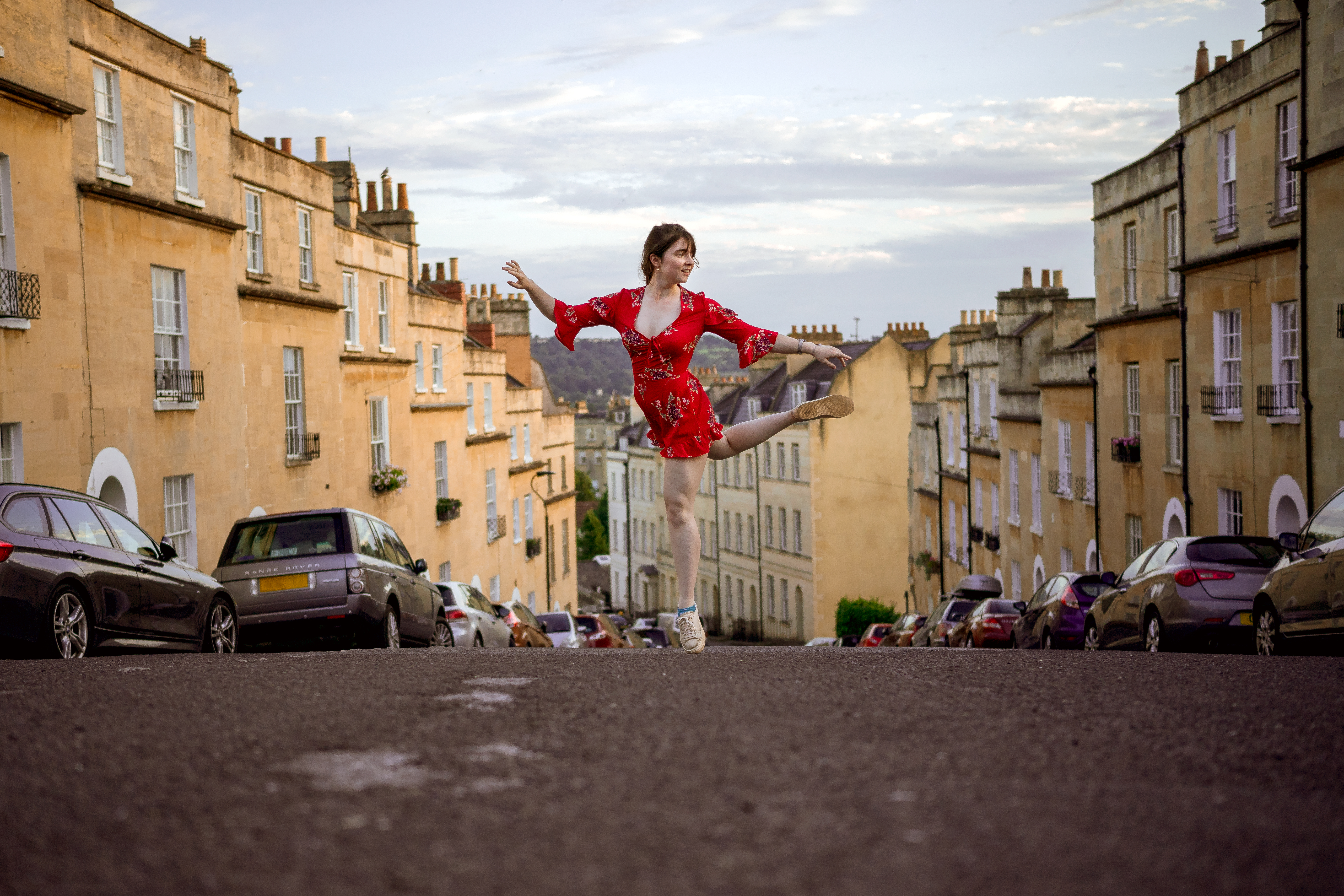
However, we did notice some vignetting in all of our test photos that were shot at wider apertures (which we also did not fix). Whereas the distortion was only noticeable in certain situations, the vignetting is clear to see in most of our images from the shoot.
While vignetting and distortion might well be a slight issue with the Sigma 45mm f/2.8, otherwise the lens performs splendidly well optically. Even when shooting at its maximum aperture of f/2.8, the lens is nice and sharp.
One of the pleasant things about shooting with this lens is that there's minimal focus breathing. This is where the focal length is ever so slightly affected by the focus that you set. If you adjust the focus ring back and forth on basically any lens and watch the sides of the frame, you'll be able to see your composition changing very slightly. It's totally normal, and even professional lenses will have it, but the less of it there is the better.
Minimal focus breathing is good for videographers who need to change focus while shooting - so we guess this might be Sigma's consolation prize for the stepped aperture ring!
Lab tests
Sharpness
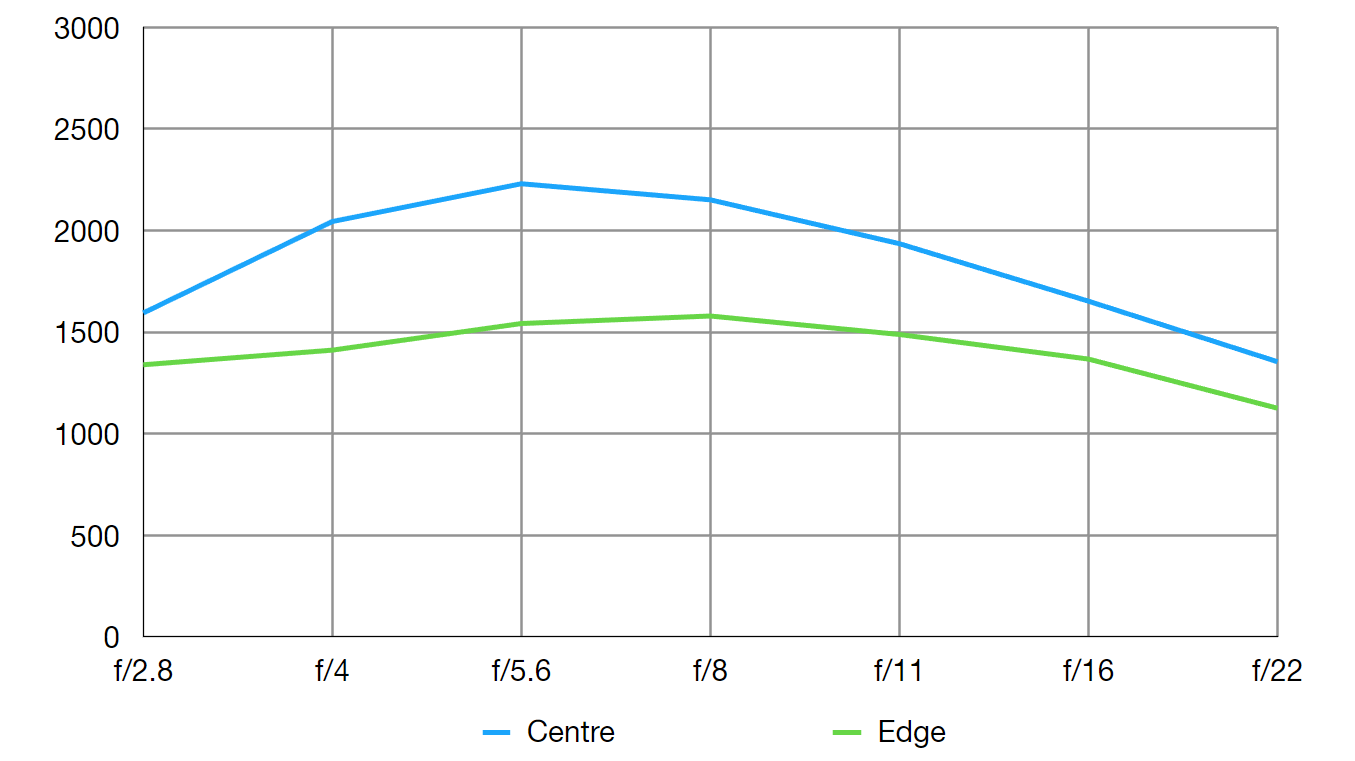
Centrer-frame sharpness is average with the lens aperture wide open at f/2.8, but as soon as you stop down to f/4 sharpness becomes very respectable and stays so right through to f/11. Corner sharpness is less outstanding, but still acceptable, even wide open.
Fringing
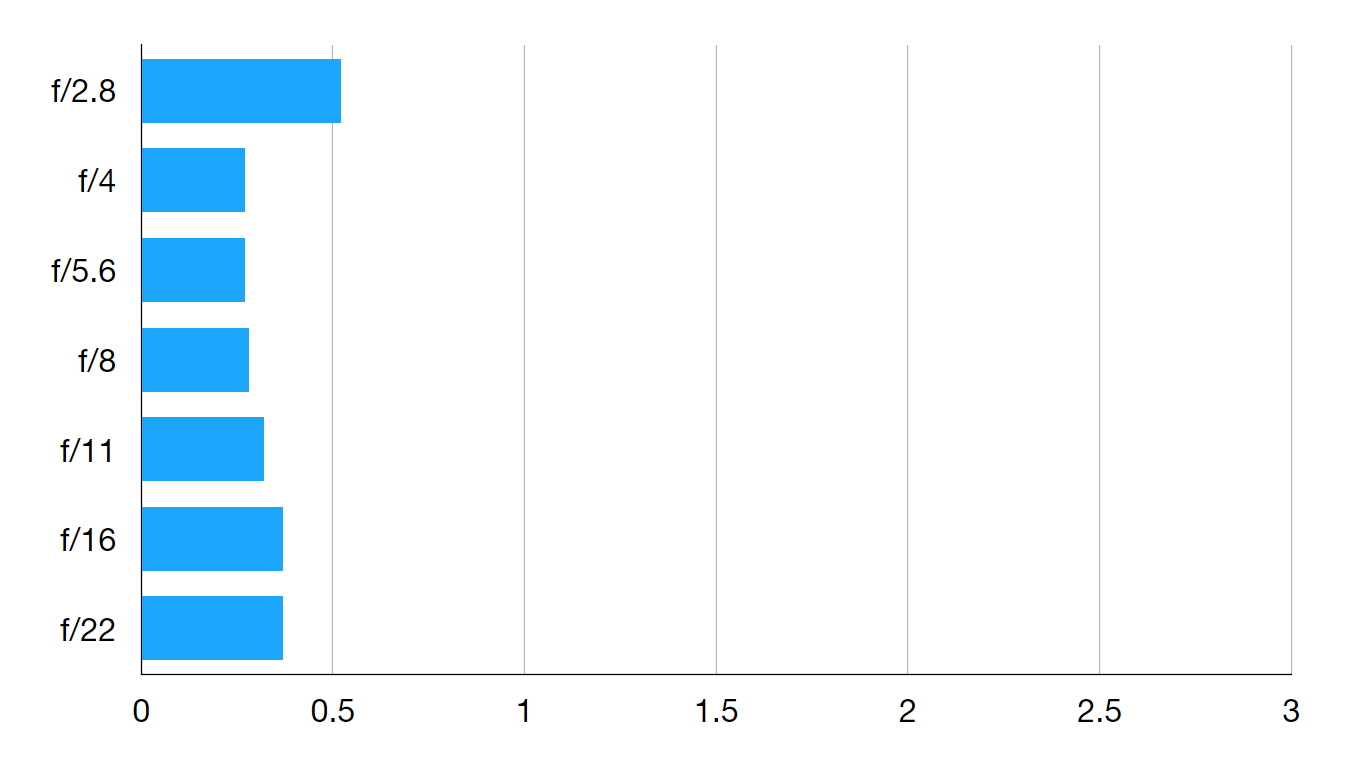
We've got no issues with the amount of chromatic aberration, which is very low throughout the aperture range, and that's with all in-camera lens correction disabled. You're therefore unlikely to spot any fringing in real world shooting.
Distortion: 2.01
Strangely for a wide-angle lens, the Sigma 45mm produces moderate pincushion distortion - we'd normally associate a small amount of bulging barrel distortion at this focal length. It's not particularly noticeable though, especially if/when Sony releases firmware updates to automatically correct this distortion in-camera.
Verdict
Overall, we really, really liked the Sigma 45mm f/2.8. Its greatest strength by far is that it's a good quality prime that's compact enough to throw into your bag on a whim. Light and compact, we think this lens is perfect for travel, street and portrait photography.
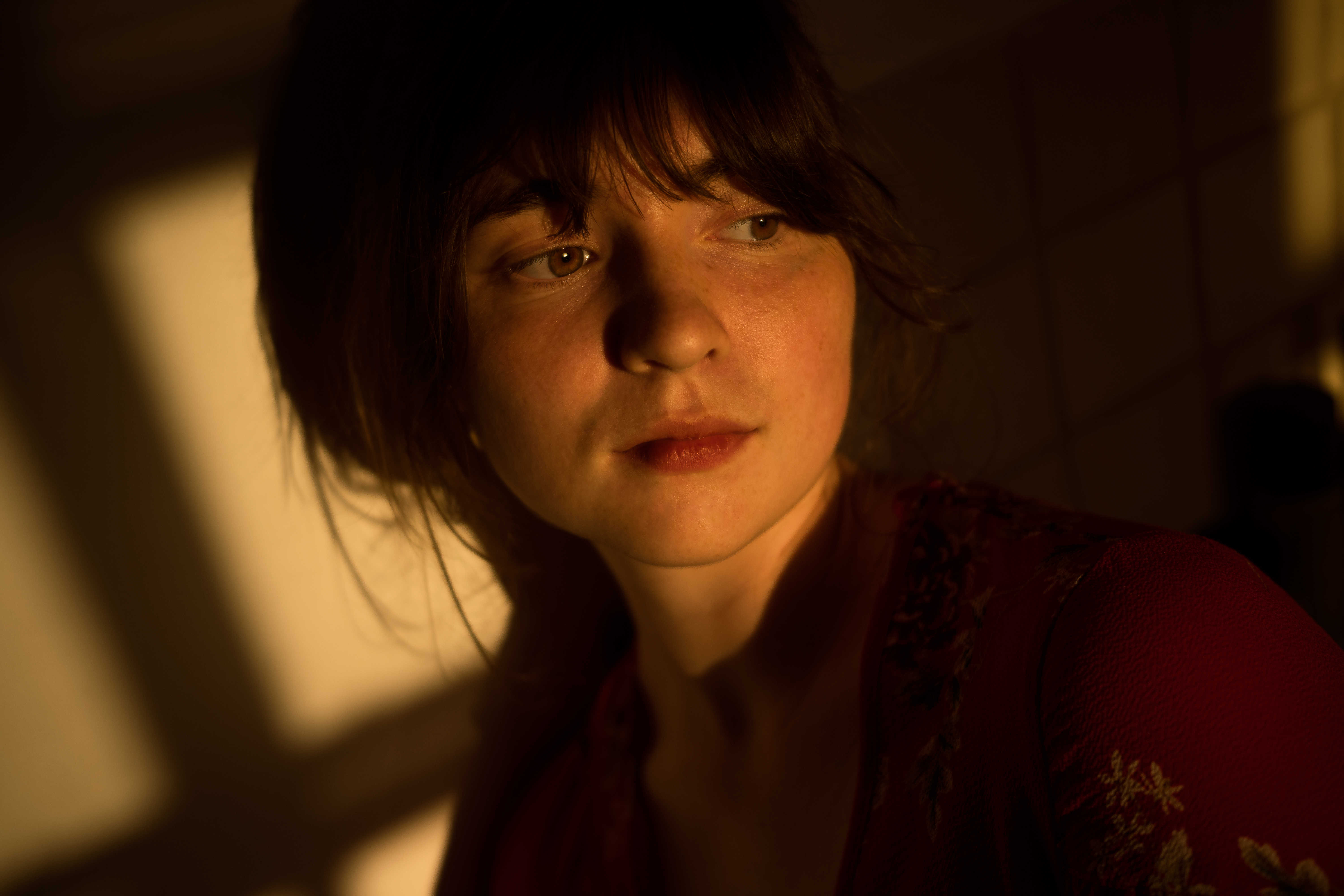
Our main frustrations were with the vignetting and slight distortion. However, while Adobe doesn't support lens correction for the 45mm f/2.8 as of writing, we're sure it won't take long for a one-click solution to be available. In the meantime, you can always manually fix the problem in Lightroom or Photoshop (or almost any editing software really). The only other quibble is that it would have been a big bonus if the aperture ring had been stepless for videographers.
However, all in all we're a big fan of this lens and would certainly seriously consider investing in it ourselves. Great image quality in a compact package for an affordable price - what's not to love?!
Read more
Best mirrorless camera in 2019: we pick the best compact system cameras
What is a pancake lens and why would you want one?
Best camera, lens and accessories for wedding photography
With over a decade of photographic experience, Louise arms Digital Camera World with a wealth of knowledge on photographic technique and know-how – something at which she is so adept that she's delivered workshops for the likes of ITV and Sue Ryder. Louise also brings years of experience as both a web and print journalist, having served as features editor for Practical Photography magazine and contributing photography tutorials and camera analysis to titles including Digital Camera Magazine and Digital Photographer. Louise currently shoots with the Fujifilm X-T200 and the Nikon D800, capturing self-portraits and still life images, and is DCW's ecommerce editor, meaning that she knows good camera, lens and laptop deals when she sees them.
